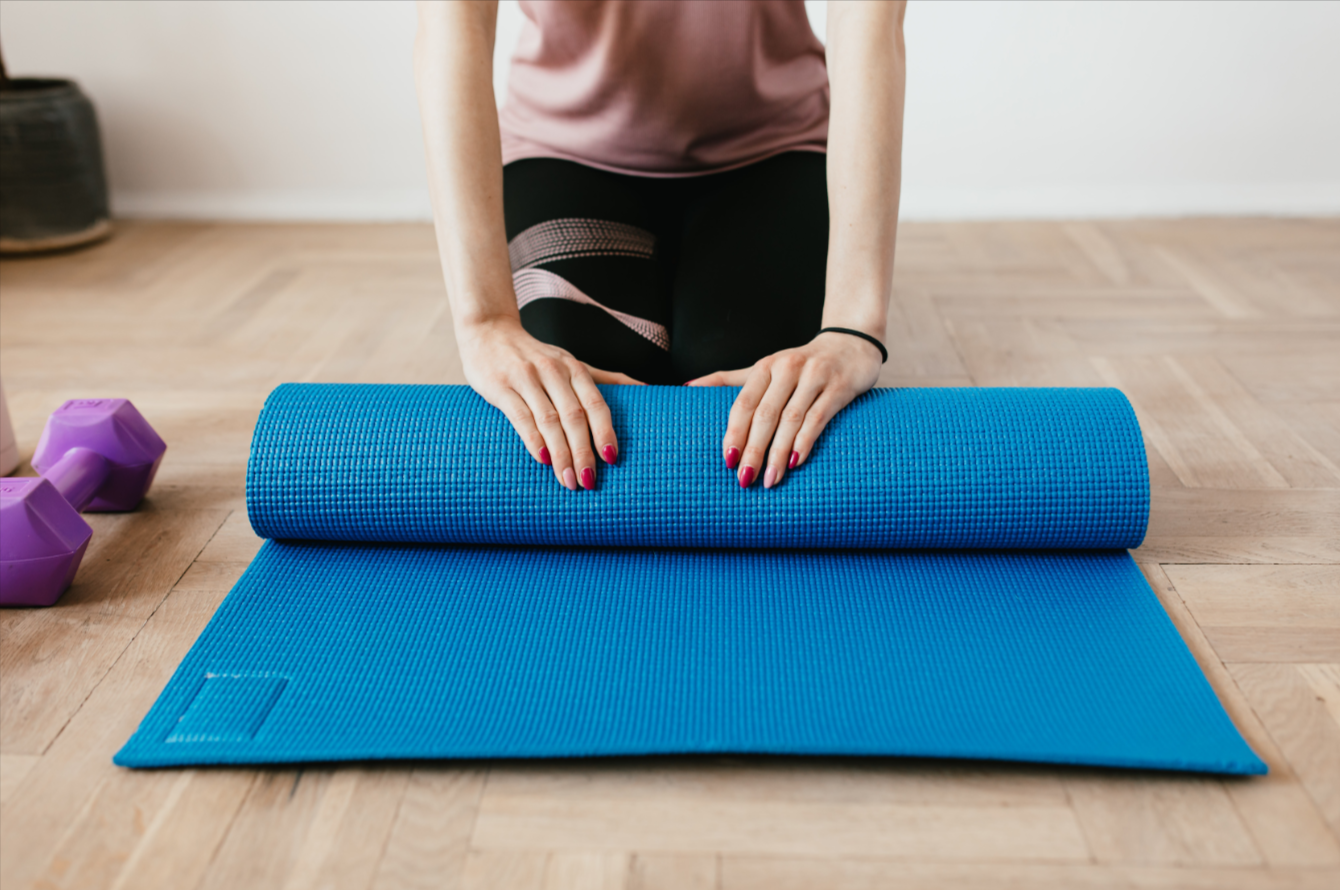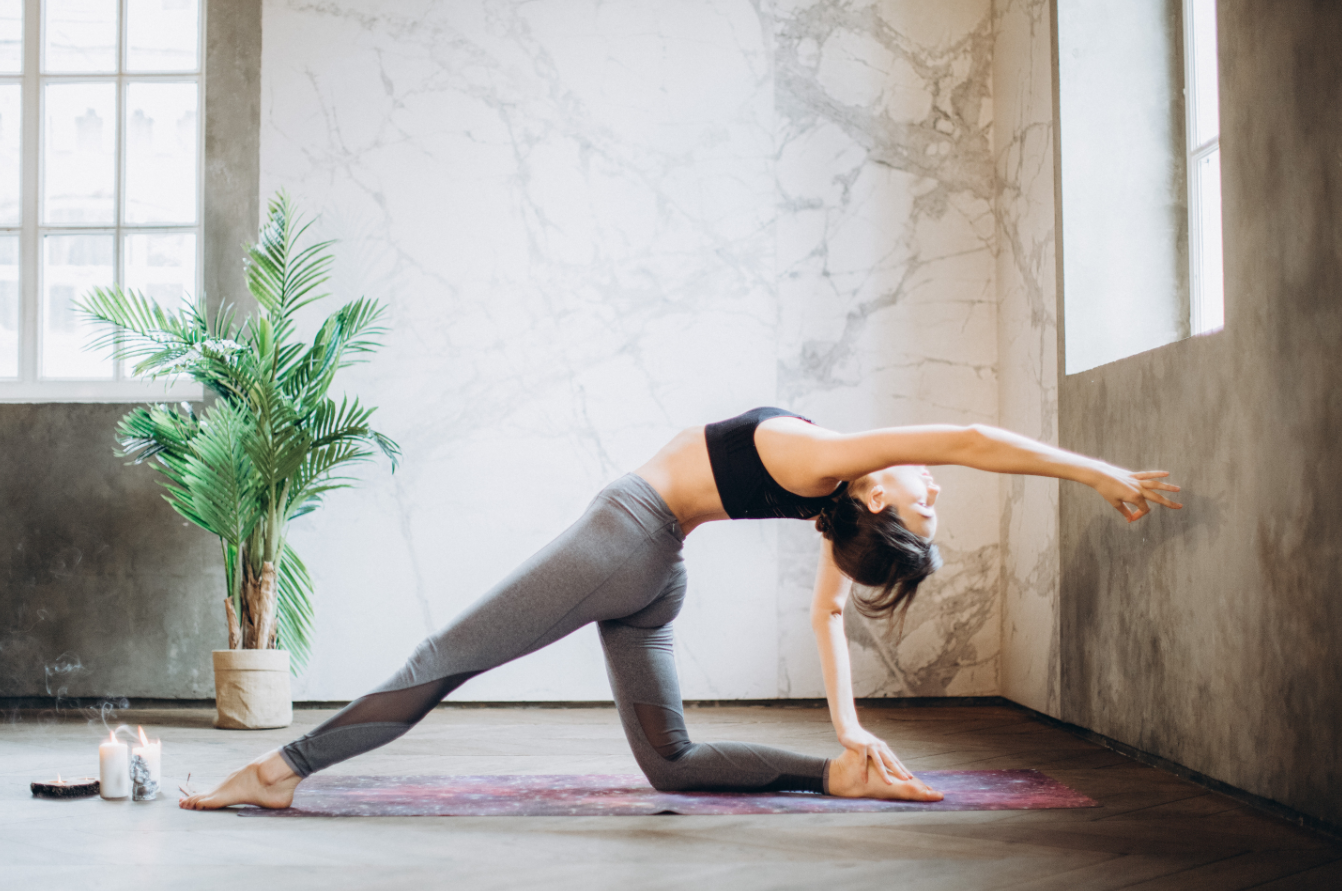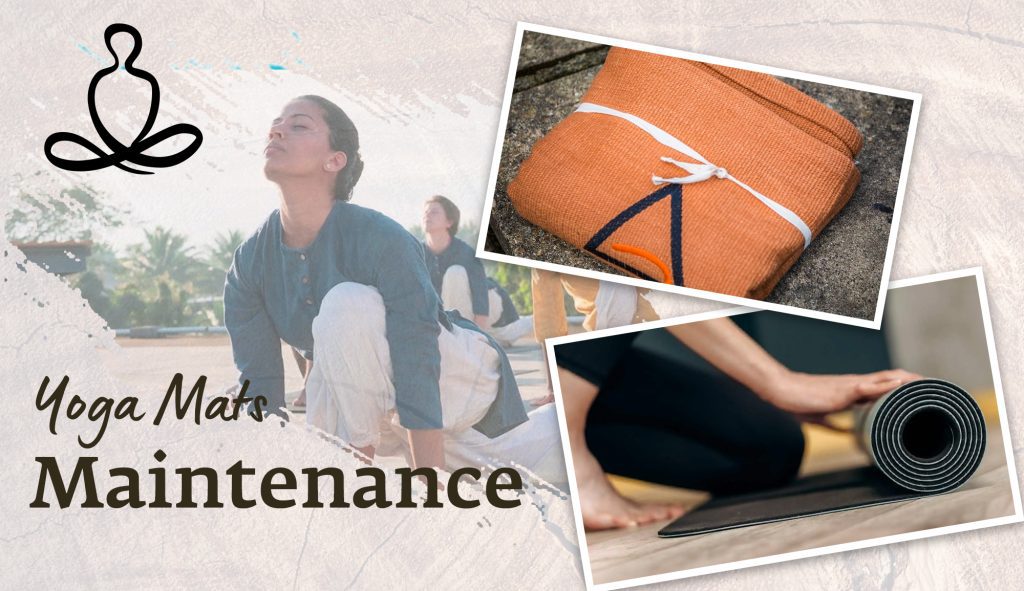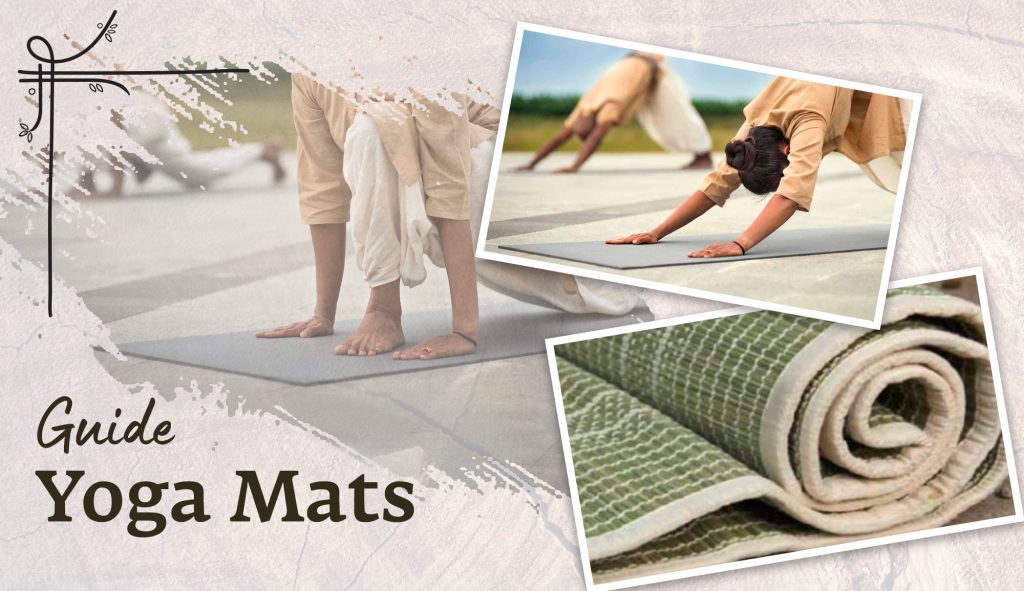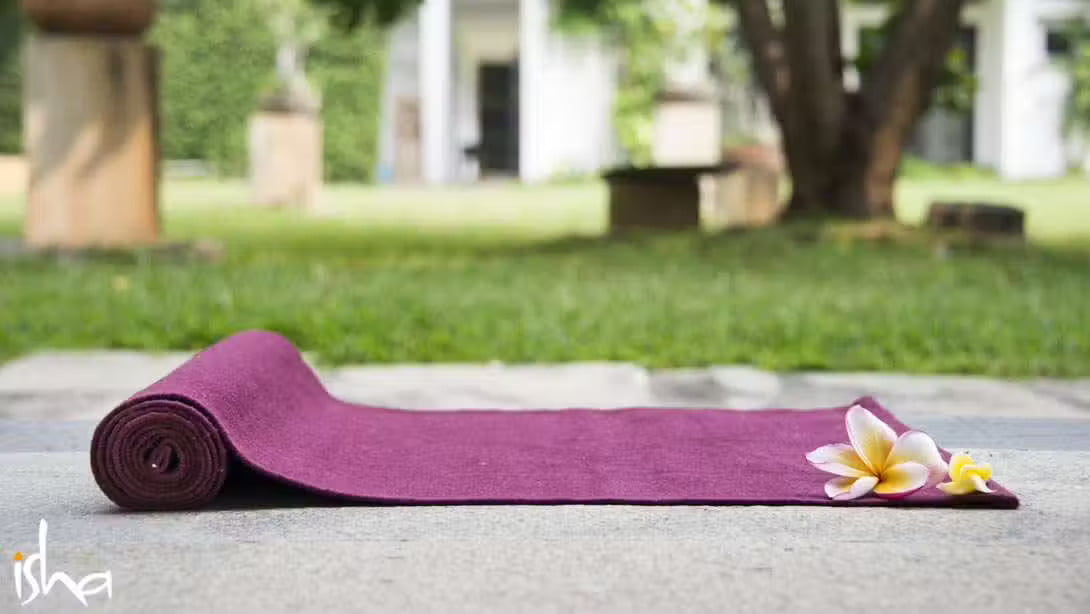Yoga needs your complete attention and focus. One main yoga equipment that helps you have your undivided attention during practice is your Yoga Mat!
Having a Yoga mat that is well cushioned, and firmly planted on the ground ensures comfort and safety during yoga asanas.
Yoga mats provide grip, cushioning and an uninterrupted connection with the earth (more on this later) which means that you can hold your asanas for a long time without any slipping accidents.
The cushioning of the mat provides you with extra comfort so that you can maintain the asana posture for a long time regardless of the hardness of the floor.
In this Ultimate Guide to Yoga Mats, we’ll guide you on how to purchase a yoga mat, the importance of having a yoga mat, the best material for a yoga mat, how to maintain the mat, and much more.
So sit back and read on, and let us know in the comments below which yoga mat is your best fit!
Is there a difference between a yoga mat and an exercise mat?
Fitness workouts include hopping, jumping, and rigorous fast-paced exercises that make you sweat a lot. So an exercise mat is comparatively thicker, preventing any chances of injuries. It is also a little spongy for absorbing shocks.
On the other hand, yoga mats are thin to provide you more stability and control over your body while doing the yoga poses. Yoga mats have a rough surface providing you with enough grip to remain still in the posture.
What type of yoga mat material is the best?
Sadhguru says – “When you are doing yoga, your first relationship of being one is with the earth. To be in touch with the earth is important. If you can afford to do this, for maximum impact in hatha yoga, you must make a space with packed mud, clay, and use either raw silk or cotton cloth – raw cotton, not sanforized – and do yoga on that.”
To get the maximum benefit from yoga, you can make use of an eco-friendly mat made up of natural materials. Natural fibres like cotton, jute, banana fibre, dharba grass, etc are non-toxic and readily absorb sweat. This helps you to remain focused on your yoga. The texture of these natural fibres also tends to be coarse, giving you a sturdy grip and stable platform to hold the asanas for a longer duration.
And if you choose cotton cloth yoga mats, they are foldable, lightweight, easy to wash and travel-friendly.
It is best to use yoga mats made of Organic Cotton, Jute, Banana Fibre, Sambu Straw, etc. This ensures that there is no break in the connection between you and the earth.
What about Rubber or PVC Mats?
Many of us find rubber mats convenient. However, are they the most conducive mats for yoga?
Yoga postures are far more than body movements. Since yoga goes beyond just the physical, using mats made up of natural fibres is crucial to your well-being.
Rubber mats are not entirely bad. Unlike the foam yoga mats, these mats are non-toxic, easily available, and provide the necessary grip. On the flip side, rubber mats contain latex which could be a problem for those with allergies. Rubber mats are also heavy, making them difficult to travel with! But if you are not so sensitive to allergens and are not much of a traveller, then go ahead and consider a rubber yoga mat.
PVC is indeed cost-effective and durable but if you are doing yoga for your well-being, using a mat made up of PVC can be a contradictory option. For example, research has shown that PVC contain Phthalates. Phthalates are softening agents that are used in making PVC mats for flexibility and longevity. These are suspected to be carcinogenic.
Can I use a carpet or rug instead of a yoga mat?
A carpet or a rug seems to be a convenient choice when we are doing yoga at home. Although the parameters necessary to do yoga go far beyond just convenience. Let us consider a few.
Is your yoga carpet / yoga rug slip-proof?
Yoga involves a variety of asanas. These asanas are required to be held in posture for a certain amount of time. Having a mat that provides grip is crucial to go about the process seamlessly.
Is it made up of natural fibres?
The material that we choose for our yoga mat determines the experience of our practice. Using natural or organic material is best suited as this material is mostly allergy and irritation free.
From providing a toxic-free environment to ensuring that we are connected to earth throughout the practice, the material of the mat goes a long way.
Is it comfortable enough for you to do yoga?
Comfortable and convenient mats keep you well-focused on yoga. Natural material, a surface that is coarse enough to provide grip, and a mat that is thin enough for you to feel the floor are fundamentals for a good yoga mat.
Is it foldable or easily portable?
If you are a regular yoga practitioner, you know how important it is to have your yoga mat with you wherever you go! In our experience, lightweight yoga mats or folding yoga mats are the most suited for travel purposes.
If your answer is yes to the above questions, then go ahead and use a carpet/rug for yoga. Otherwise, a good quality yoga mat is your best choice.
Why should I use a yoga mat? How about going matless?
Let’s look into why our ancestors used mats in the first place.
Traditionally, people used yoga mats made up of natural grass like dharba grass, banana fibres etc. They used these natural mats as they are said to act as a protective sheet to help us retain the energy our body generates during yogic practices. Mats also provide grip to stay in correct postures for long durations.
Considering the above aspects, yoga with a mat is a beneficial choice. Nevertheless, you are free to experiment with matless yoga, but with caution.
5 benefits of using a yoga mat
While doing yoga asanas, you would have to stretch the body at various angles. With such a practice, you might slip at times when holding difficult postures while doing yoga on the ground. Yoga mats help prevent this by providing enough grip with their non slip yoga mat properties.
Yoga mats provide a stable platform to do postures that require body bending and stretching. This helps us to completely focus on the practice without being concerned about the balance during the asanas.
Yoga mats support you to be comfortable during your practices. Certain asanas require you to put pressure on your knees, ankles, palms, or your feet during the practices.
Without your yoga mat, doing these asanas for a prolonged period of time gets very difficult. With a yoga mat, any hard surfaces get readily covered with a padded layer providing a cushion with which you can switch from one yoga pose to another instantly.
Yoga mats are said to provide insulation between the body and the ground. This prevents any loss of heat, charge, or energy from the body to the ground and hence provides thermo-insulation. Ideally, it would be best to have a mat which is breathable and absorbs sweat.
When you have a yoga mat with you, it becomes a part of your lifestyle. You tend to carry it with you wherever you go and this greatly ensures you do your practices wherever you are! Having a yoga mat helps you build consistency by providing an ecosystem to keep up with your practice.
How to choose a yoga mat?
The importance of a yoga mat while practising yoga or sadhana cannot be overstated. The right yoga mat can increase the effectiveness of your yogic sessions by multifold. But how do you choose the perfect yoga mat for yourself? Well, we have compiled a list of the most important factors you should consider before buying a yoga mat. Let’s get into the details.
The first thing while getting a yoga mat is identifying its nature. Is your yoga mat made of natural or synthetic materials? Synthetic or man-made yoga mats are non-biodegradable. A popular example is PVC mats.
Whereas, natural yoga mats are biodegradable in nature and are free from chemicals. Some popular examples might be Natural rubber, Organic Cotton, Jute, etc.
Different materials of mats serve different purposes. So, if you want a better grip, it’s best to go with PVC mats. Whereas, if you need more elasticity and sponginess, you should opt for cotton or jute yoga mats. In case you’re allergic to latex, it’s best to avoid rubber mats.
The right thickness of your yoga mat is important for a conducive yoga session. If your mat is very thin, you might end up hurting your knees with prolonged yoga poses. On the other hand, if your mat is very thick, you might fail to form a connection with the ground beneath you.
The yoga mat thickness ranges from ¼ inches to 1/16 inches. The standard mats that are most popular for regular usage are ⅛ inches thick. Whereas, if you’re looking for a travel-friendly yoga mat, you may go with the 1/16-inch thin yoga mats. These are lightweight and easy to fold, making them ideal for travel.
So, always choose a thin or thick yoga mat as per your comfort, convenience, and purpose of use.
The texture of your mat decides the amount of traction it would provide while you’re performing yogic practices. If you need a softer feel, a PVC mat would be best. Whereas, if you need an anti-slip mat with a more rough texture, you can go with jute or cotton mats.
Another important factor to consider while you buy yoga mat is your budget. Usually, the ⅛ inch yoga mats are on the lesser expensive side. Whereas organic and eco-friendly mats are more expensive.
Apart from that, yoga mats with prints and patterns are on the higher end of the budget spectrum as compared to solid-colored mats.
If you are a regular yoga practitioner, you may have to carry your yoga mat around a lot. Thus, you should always go with a yoga mat that is easy to fold and offers an extended strap for portability. Apart from that, you can also opt for a yoga mat cover for additional comfort and convenience.
Where do I find organic, biodegradable and recyclable yoga mats for my yoga practice?
Isha life offers a variety of nature-friendly and biodegradable yoga mats starting from organic rug mats to sambu straw mats. We have cotton mats designed with a rubber coat bottom finish for better grip. If you are looking for something more exotic, we also have jute mats and banana fibre mats. The best thing is they are handwoven, undyed, easily washable, and eco-friendly.
Cotton Yoga Mat Back Rubberised
-
Natural Fibre along with latex
-
Medium-heavy weight
-
Can be rolled
- Can use yoga mat bag to carry
-
Hand wash
-
Toxin free
-
Medium moisture absorption
-
Medium cushioned
-
Eco friendly
Organic Cotton Rug Mat
-
Natural Fibre
-
Lightweight
-
Foldable
-
Easily portable
-
Machine Wash
-
Toxin free
-
Thin cushion
-
Eco friendly
Banana Fibre Yoga Mat
-
Natural fibre with back rubber coat
-
Lightweight
-
Can be rolled
-
Easily portable in yoga mat bag
-
Wipe with wet cloth
-
Toxin free
-
Medium moisture absorption
-
Thin cushioned
-
Eco friendly
To enhance the experience of yoga, Isha Life has created natural & organic yoga mats. These yoga mats are made up of a variety of natural materials like cotton, jute, sambu straw grass, banana fibres etc.
One can make use of any of these natural yoga mats to stay connected to the earth throughout the practice. The thickness of the mats provides enough cushioning while sitting on hard surfaces. The mats are easily foldable, making them easy to carry travel mat options.
See what Sadhguru has to say about yoga mats here!
Are yoga mats portable?
If you are looking to take your practice with you wherever you go, here’s a tip to uncomplicate the process. Choosing a foldable, lightweight travel yoga mat eases the process. Most yoga mats made up of natural fibres are foldable. They are easy to wash and easy to carry, making them travel-friendly. If you travel frequently, it’s handy to get a yoga mat bag for easy maintenance.
Here are a few of the yoga mats from Isha Life that are the most travel-friendly.
You can fold and carry them or pack them folded in your bag. If you like to carry it in a sling bag, that’s possible too by rolling it and carrying it in a yoga mat cover.
Is it okay to share my yoga mat?
If you’ve been doing your yoga regularly on your yoga mat, by now you can feel a sense of close relationship with it. By now, it may have become a close companion in your spiritual journey. Sharing a mat that has your sweat and energy attached to it may not be good for you and the one you are sharing the mat with!
The other reason is, of course, cleanliness. Lots of bacteria thrive in warm, moist environments that yoga mats provide. So hygienic maintenance of the mats is essential. Thus, it is not advisable to share your yoga mat with anyone. Also, this brings us to our next question.
How often should I wash my yoga mat?
It is sufficient to wash the yoga mat when it looks visibly dirty. Gently washing the mat with mild detergents is enough. However, if you’ve shared your mat with someone else, then disinfecting the mat can be the best idea!
Also, here is an easy non-toxic DIY non-toxic essential oils yoga mat cleaner to keep odours and sweat at bay.
- Fill a large bucket or tub with warm water. Add to this, add 1 tbsp dish soap and 2 tbsp vinegar(optional).
- Soak your mat in this solution for about 10 to 15 minutes.
- Now Using a soft scrub gently scrub your mat.
- Rinse your mat and let it dry completely in the sun before the next use.
DIY Disinfectant Spray
Here’s a simple DIY disinfectant spray that helps in deep cleaning the mat whenever necessary.
- ¾ cup distilled water
- ¼ cup white vinegar
- 15 drops of lavender essential oil/tea-tree oil
- Spray Bottle
Mix all the above ingredients in the same quantity and fill them up in a spray bottle
You can use the disinfectant spray either to wipe your mat clean and wash the mat. It all depends upon the washing instructions for your mat.
How about using the washing machine instead?
Good question. The answer to this depends on the kind of mat you are using. There are many mats that are machine friendly. A few examples are the 100% cotton rug yoga mats, Handwoven organic cotton rugged mats. These are easy to fold and can be simply washed using a washing machine.
However, a few yoga mats specifically mention hand washing only. In that case, it is best to stick to the rules. For example, some of the isha yoga mats such as Cotton Rug Yoga Mat Back Rubberized and Sambu Straw Yoga Mat have rubber bases or natural fibre bases. These cannot be folded as easily as pure cotton yoga mats. These yoga mats can be hand-washed whenever you feel like it has gotten soiled.
Below is your guide to machine washing a yoga mat:
Steps to machine wash a yoga mat
- Fit your yoga mat into the washing machine comfortably. It is best if you wash your yoga mat separately from other clothes.
- Take a mug full of water and dilute about 1tbsp detergent powder or liquid soap into it until it forms a homogeneous mixture.
- Now add this mixture into the machine by putting the washing machine on a quick & gentle cycle.
Which side of the yoga mat to use?
Yoga mats have two sides. One side is bumpy and the other side is usually smoother than the bumpier side. The side that has these small bumps is the side your feet should be on.
These bumps are there to provide enough grip when you do your practice. Rough surfaces ensure stability and prevent you from slipping during your practice.
However, some yoga mats have the same surface on both sides. These mats have a grip on both sides. In this case, you can use any side that is comfortable for you.
Is it okay if yoga mats get wet?
Yoga mats are of two kinds. Open-celled or closed cell. Open-celled mats are made up of materials that quickly absorb any sweat, water etc. These mats are said to have a lot of air which provides cushion and allows the mat to absorb moisture to stay grippy. A few examples of open-celled mats are cork yoga mats, cotton yoga mats, etc.
A closed cell mat is essentially a much denser material that doesn’t allow moisture to get inside. This might make it much easier to clean but can get slippery during practice as it wouldn’t absorb much sweat! Some examples are PVC yoga mats, natural rubber yoga mats, etc!
You can freely wet open-celled yoga mats and can wash them effortlessly. As these mats absorb water readily, washing these mats once a month is a healthy yoga mat cleaning routine.
However, closed-celled mats can be wiped clean with a wet towel or cloth. These mats tend to break when submerged in water over time. Hence, cleaning them with a slightly wet cloth is sufficient.
Here are a few open-celled & Closed celled yoga mats from Isha:
How to carry your yoga mat?
If yoga is a part of your daily routine, you need a mat that’s easy to carry around. Yoga mats are usually thin and lightweight by design, so you can easily fold and stuff them in your hand bag. Some yoga mats also have a strap attached to them, making them portable enough to be carried in your hands.
However, the best solution for regular yoga mat users would be to get a yoga mat cover. It’s a cylindrical cover specifically designed for storing a yoga mat. All you need to do is roll your mat and place it in the cover to keep it secure from dust, dirt, and sweat. It even has straps attached to it, so you can easily carry the yoga mat cover around your shoulders.
From certified organic cotton to jute, to natural hemp cloth, Isha Life Yoga Mat Covers are available in a variety of types, colours, and prints!
3 Best Isha Yoga Mats to Elevate Your Yoga Routine
Cotton yoga mat back rubberized
I’m happy that I am in contact with a natural fibre when doing the practice instead of worrying if I’m being exposed to toxic chemicals. In the beginning, it took some time for me to adjust to the texture of the mat but as my flexibility increased, I got more comfortable with the mat. Now I just love my mat.
Organic cotton rug yoga mat
One of the best things about my yoga mat is that it’s lightweight and travel-friendly. I can fold it however I like and carry it anywhere without hassle. The fact that it’s organic cotton makes me feel comfortable and connected to nature as I do my asanas. Easy to wash & maintain. Its just too many good things in one mat!
Sambu straw diamond Yoga Mat
My mat looks awesome and has just the right amount of softness. The texture and cushioning of this mat help me not feel any pain while doing asanas.
Quite a unique yoga mat compared to so many other commercial yoga mats in the market!
Which yoga mat material is the best fit for you?
Each of these natural fibres in turn has its own pros and cons depending on what you’re looking for in a yoga mat. For example, If you prefer to have a mat that is easily portable then a lightweight banana fibre or organic cotton yoga mat is probably your best fit. If you’re looking for a good grip and a mat for rough and tough use, a back rubberised yoga mat looks best. Now that you’ve read what each natural fibre mat offers, you must be sure about what you’re looking for!
Conclusion
Since you are moving towards a conscious lifestyle through yoga, it is important to make a conscious choice when choosing a yoga mat. Our body is sensitive to the kind of materials we use, be it clothes or yoga mats.
Using natural and consciously crafted mats like the ones that are hand-made using natural organic fabrics is not only planet friendly but also connects us to the earth element within us through yoga. But if you are choosing yoga for athletic benefits then going for mats made up of latex is also an option.
Do you use a yoga mat for your yoga practice? Which yoga mat do you prefer to use? Let us know in the comments below. And if you are looking to get a new yoga mat, feel free to take a look at the collection of Isha Yoga Mats. We hope you find your best fit!
Grab Your Favourite Isha Yoga Mat Now!

